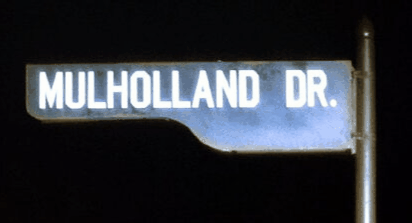Richard Wilson: Irons in the Fire
Talbot Rice Gallery, Edinburgh
Until 14th December 2002
“Personally, I have always considered Richard Wilson to be the finest British landscape painter of the late eighteenth century”, quipped art historian David Hopkins. Judging by the audience, many turned up at the Talbot Rice expecting the sumptuous aristocratic trappings of Wilson’s idealised Italianate vistas. Instead, they were tackled by a Sim City of scratchy diagrams and homemade models mounted on shaky filing cabinets and rusty shelving. “I don’t belieeeve it!”, reverberated around the gallery, but no, it wasn’t that Richard Wilson either. This Richard Wilson is the one that made that monumental lake of recycled oil 20:50 (1987), now permanently installed at the Saatchi Gallery.
Touring Sheffield, Leeds, Edinburgh, Manchester, Warwick and London, Irons in the Fire should set a few people straight on Wilson. Far from being a one hit wonder, he has had an illustrious international career as a site-specific artist, from collaborating with the industrial sound sculpture group Bow Gamelan Ensemble in the eighties, to his current grand architectural visions. Wilson isn’t in the acrimonious business of trotting out permanent monuments primed for vandalism and a jumble of angry letters to the local rag. His experience with Bow Gamelan committed him to the transformation of everyday urban industrial detritus into rich metaphor. Wilson has a Zen like respect for materials and environment, making his work by taking things away, producing something from nothing. His best works are quintessentially nineties ambient interventions into the built environment, some so casual they might be mistaken for the work of vandals. Pimlico Proposal for example, involves cutting and replacing circles of concrete and cladding from sections of wall and pavement on the short walk between Pimlico tube station and Tate Britain in Millbank. This whispering campaign subtly draws attention to the very fabric of the city, producing an understated trace of a trail blazed by thousands of tourists every week. Bronze Pole of the North (1995) for Tate Liverpool, is an unrealised proposal to cut a large pole through the gallery’s three floors into the bed of the Albert Dock. The pole would rise and fall according to the tide, confusing inside with outside and bringing the serenity of culture into conflict with the perfidiousness of nature.
Wilson’s romantic cross-examination of material culture seems to underlie this exhibition’s uneasy relationship with the museum, something we ought to expect from a practiced public artist. The Joint’s Jumping (1996-99) is an unrealised proposal for the BALTIC contemporary art space in Gateshead. Wilson planned to set the façade in motion by creating two templates of the former flourmill in orange neon, one placed skew-whiff over the other. By fluctuating between the two, this heavy industrial building would have a danced on the Tyne, a metaphor for the dynamic, metropolitan Kunsthalle culture represented by BALTIC and its many clones. BALTIC would thus have taken the appearance of a go-go bar, a sardonic comment on contemporary art’s status as a leisure industry and New Labour’s vision of ‘creative economies’? Perhaps Wilson’s work is unwittingly compliant with this frappe-drinking culture. “It works, but filing cabinets and Dexion shelving have become moribund media within the overly civilised western art milieu”, estimated artist Keith Farquhar. Farquhar has a point, trashy was certainly chic in art circles in the early 1990s, dressed-down industrial buildings being used for a flurry of artist led initiatives, but now it all looks a little rusty. The post-industrial aesthetic presently belongs to the establishment; think of Tate Modern, BALTIC and the Palais de Tokyo, Paris.
A further conundrum faces Wilson’s work, namely that is rarely designed for the gallery. Like much conceptual and land art of the 1960s in which it finds precedent, it exists here only as documentation. This could have lead to an absurd fetishising of the minutiae of Wilson’s working practice, consecrating his every mark and remark. Irons in the Fire, however, does an impressive job of representing the complex genesis of his work, utilising witty maquettes, sketchbooks, montages and DVD documentary footage. What saves this from becoming dreary is the amateurishness of the constructions. Wilson’s work has the charm and innocent invention epitomized by balsa kits, Meccano and Valerie Singleton’s sticky-back plastic, the ‘furniture’ cut from an IKEA catalogue in Tumbleroom (2001) being a high point.


